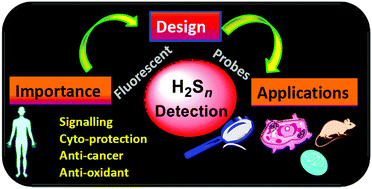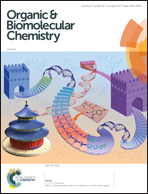Fluorescent probes for hydrogen polysulfides (H2Sn, n > 1): from design rationale to applications
Abstract
Hydrogen polysulfides (H2Sn, n > 1) being active members of the reactive sulphur species family are gaining much research interest these days due to their involvement in signal transduction, anti-cancer activity and cytoprotection. The importance of H2Sn particularly in human health makes it desirable to explore selective and sensitive techniques for their detection. Out of the several techniques and tools available, fluorescence spectroscopy seems advantageous due to its high sensitivity, non-destructive nature and applicability to living systems. Remarkable progress has been made in this field and different approaches have been adopted for the selective detection of H2Snin vitro as well as in vivo. The present review discusses the importance of H2Sn in living systems and highlights recent advances in the design of fluorescent probes for the detection of H2Sn. It offers a critical overview of the designing strategies adopted for H2Sn detection with emphasis on various ways for achieving selectivity over other reactive sulphur species (RSS) and their applications in biological systems. Further, the fundamental challenges and future prospects in this field are also discussed.

- This article is part of the themed collection: Celebrating the RAOBC symposium


 Please wait while we load your content...
Please wait while we load your content...